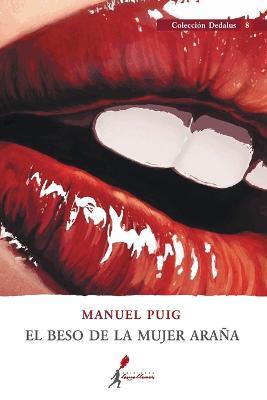About the story: Kiss of the Spider Woman Kiss of the Spider Woman is two prisoners, Luis Molina and Valent n Arregui, share a cell in a Buenos Aires prison. The story takes place between September 9, 1975 and October 8, 1975. Molina, an effeminate gay window-dresser, is in jail for "corruption of a minor", while Valent n is a political prisoner who is part of a revolutionary group trying to overthrow the government. The two men, seemingly opposites in every way, form an intimate bond in their cell, and their relationship changes both of them in profound ways. Molina recounts various films he has seen to Valent n in order to help them forget their situation. What type of book is Kiss of th Spider Woman The novel's form is unusual in that there is no traditional narrative voice, one of the primary features of fiction. It is written in large part as dialogue, without any indication of who is speaking, except for a dash (-) to show a change of speaker. There are also significant portions of stream-of-conciousness writing. What is not written as dialogue or stream-of-consciousness is written as meta-fictional government documentation. The conversations between the characters, when not focused on the moment at hand, are recountings of films that Molina has seen, which act as a form of escape from their environment. Thus there are a main plot, several subplots, and five additional stories that comprise the novel. Historical importance of Kiss of the Spider Woman Puig started Kiss of the Spider Woman in 1974 starting with Molina, who was an experiment in imagining a romantic female. From there the rest of the notes sprouted into the novel. At first the only country that would publish the novel was Spain. Upon publication it was included on a list of novels that could not be consumed by the population of Buenos Aires. Puig feared the publication of the novel would affect his family negatively. Despite this it was entered in the Frankfurt Book Fair. It remained banned until 1983.




